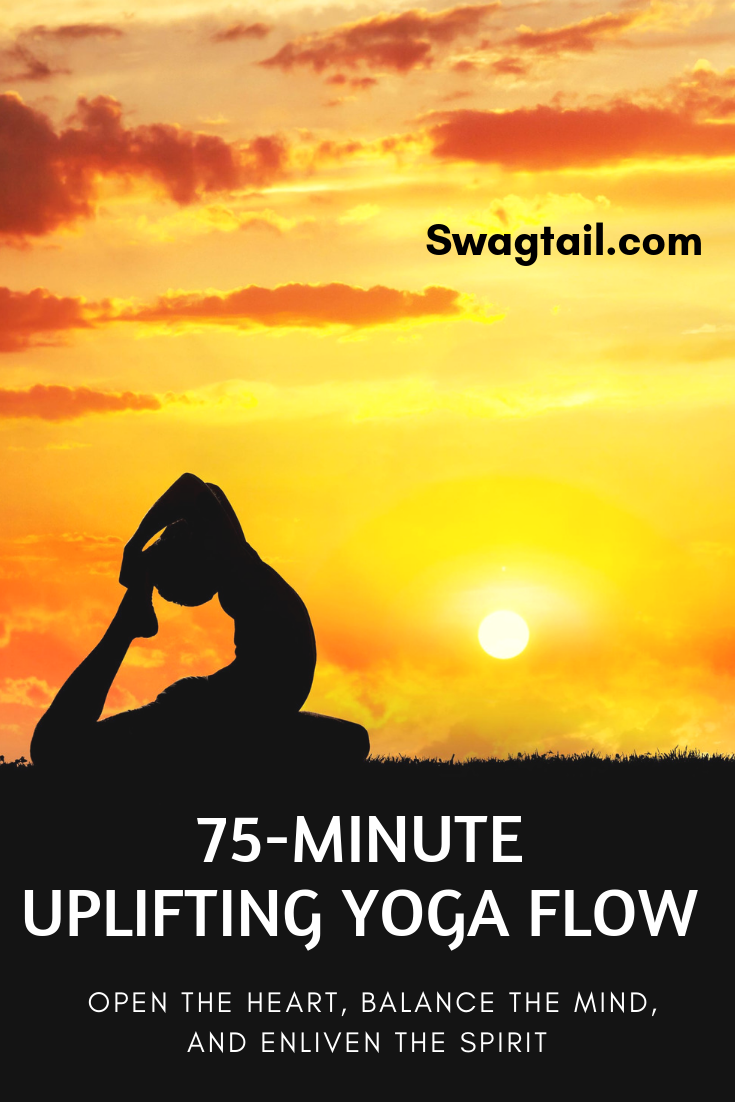 The Earth’s gravity weighs the body down and negative thoughts of the world can cause your spirits to dwindle. This 75-minute yoga flow sequence uses viloma pranayama to go against the grain of such heavy influences. Instead, you can use this flow to uplift your body, mind, and spirit on a regular basis.
The Earth’s gravity weighs the body down and negative thoughts of the world can cause your spirits to dwindle. This 75-minute yoga flow sequence uses viloma pranayama to go against the grain of such heavy influences. Instead, you can use this flow to uplift your body, mind, and spirit on a regular basis.
This flow is inspired by my friend Jelena Hardy who owns and teaches at Rishi Yoga. I had driven 2 hours from my home to run errands in Reno. This was the perfect class to give me more energy and life to make the trek back home after a long day.
The peak pose in this sequence is eka pada raja kapotasana, which is a pose that requires length in the spine, openness of the heart, shoulders and hips, as well as flexibility in the psoas and quadriceps. Just the pose alone causes physical invigoration.
When you pair that with a class theme–and practice–of viloma pranayama, you’re bound to feel lighter in your mind and spirit, too. Please modify this practice as you see fit, and email me with any sequence questions that arise. Enjoy!
VILOMA PRANAYAMA
Viloma means to go against the natural line or movement of the breath. Essentially, this part of the practice interrupts the natural flow of breath to increase your awareness. It’s also a great way to enhance an inner sense of calm amidst the breathing process.
This sequence to uplift the body, mind and spirit incorporates viloma pranayama to break through unwanted patterns of thinking. In the energizing portions of class, we will split the breath into 3 parts as you inhale. This is contrary to the single, fluid type of inhale you take on a regular basis.
Then, in the cooling portion of class, we will inhale normally and slow down the exhales by breaking them in to 3 parts. This will naturally calm the mind in preparation for savasana.
Viloma as a Class Theme
Changing the breath is just one way to shift the way you look at something familiar. Invite your students to view the habitual tendencies of society through new eyes. Encourage them to feel lighter against the downward pull of gravity. Ask them to question the negative thoughts that arise in their mind and discover which ones actually align with their best self. This can be a powerful practice to break through barriers and move into new ways of living and being.
Suggested props
One or two blankets, and a strap
OPEN THE HEART IN SAVASANA
Purpose: Start with a roll behind the heart, perpendicular to the spine. Make sure the back of the shoulders can reach the ground and the head and neck are comfortable. This quiet time on the back is a great way to introduce the class to viloma pranayama. Have them inhale in 3 parts, and exhale in one long sigh. You can repeat that for about a minute before ujjayi breath begins.
Length: 5 minutes
Additional Notes:
- The smaller the roll, the more gentle the backbend. Adjust the size of the roll so that you can be comfortable to begin.
- Keep knees bent if too strenuous on low back
(2) SEATED WARM UP
- 2A/B
- 2C
- 2D
Purpose: The next few poses will begin to build heat in the body and move the spine in all directions. A seated position also gives you a chance to come together as a group, and possibly chant OM to seal in the intentions set while on the back. You might even ask students, “In what ways are you willing to go against the grain in your life?”
Length: 5-7 minutes
Additional Notes: Encourage students to sit on a blanket or other props so their hips can be lower than their knees.
Postures:
- 2A: Find Sukhasana. Sit upright and notice the spine
- 2B: Move the spine in circles. Go both directions. (1 min total)
- 2C: Take a lateral bend to the right (Hold the each for 3-5 breaths.)
- 2D: then fold forward over crossed legs. (Hold the each for 3-5 breaths.)
- 2E: Switch the cross in the legs, and take a lateral bend to the left. Then fold forward again. (Hold the each for 3-5 breaths.)
(3) BUILD MORE HEAT
Purpose: Since the class is moving toward king pigeon, we will begin to lengthen the front of the body and create space in the shoulder girdle. We will also build heat in the legs to allow more opening in the quadriceps and outer hips (which will be needed later in class for the peak pose).
Length: 10-12 minutes
Postures:
- 3A: Inverted table top with dynamic movements. Inhale to lift the hips, and exhale to drop them to the ground. Repeat 5 times before holding. Students with wrist issues can simply lift the heart without the hips.
- 3B: Adho Mukha Svanasana. Hold downdog for 5 cycles of breath.
- 3C: Inhale to Plank. Hold for 3-5 breaths. Exhale to the floor.
- 3D: Cobra with Viloma pranayama. Inhale 3 parts, then exhale back to the floor. Repeat 3 times. Stretch back to down dog for 3-5 more rounds of breath.
- 3E: Shoulder stretch. Come through plank and optional chaturanga to get to your belly. Take airplane arms at shoulder height, palms down. Move right arm two inches further away from body before rolling on to right side of body. Hold 3-5 breaths
- 3E
- 3F
- 3G
- 3F: Shoulder stretch with optional quad stretch.
- 3G: Ardha bhekasana. Keep the quad stretch while rolling back on to the belly. Students without the bind can simply roll over and reach back for the left foot as a deeper option for sphinx. Pause in the prone position (on your belly) before moving to the second side.
- 3H: Repeat 3E – 3G on the second side before coming to down dog or child’s pose after the rest on the front side of the body.
(4) SURYA NAMASKARA C
Purpose: This classical sun salutation sequence is a great way to get the entire body moving while opening up the front line of the body. Run through the sequence 2 times on each side.
Length: 5-10 minutes
Additional notes:
- On the second round, you might want to hold low lunge longer on each side. You can then incorporate cactus arms to open the shoulders and chest.
- On the second round stay on the belly and add 3 rounds of shalabhasana. You can use viloma breath here. Inhale 3 parts to lift the torso, then exhale fully to release.
(5) CRESCENT FLOW TO KEEP BUILDING HEAT
Purpose: Now it’s time to work the legs. While working on standing postures, we will also invite the spine to get longer (again going against the grain of gravity).
Postures:
5A: Crescent lunge legs, but just hover fingertips over floor (or blocks). Work on core engagement and lengthening the spine. Hold 3 breaths.
5B: Crescent lunge legs, but extend arms forward. Hold 3 breaths.
5C: Crescent lunge, full expression. Use viloma breath in 3 parts to bring the arms up, then use a single exhale to draw hands down the midline to the heart. Repeat 5 times.
5D: Come to neutral. Step forward to uttanasana in between sides for more hatha style class. Or, take a vinyasa before jumping back to uttanasana.
5E: Repeat 5A – 5C on the second side.
(6) WARRIOR FLOW
- 6A
- 6B prep
- 6B
- 6D
- 6E prep
- 6E
Purpose: We will continue to build heat in the legs while inviting the heart to open.
Length: 10-12 minutes
Postures:
6A: Crescent lunge, starting with right foot forward to establish balance.
6B: Warrior 3. Hold the balance 3-5 breaths.
6C: Come to stand at the front of the mat. Then, place weight on left foot and take standing figure 4, which externally rotates the right hip and stretches that area.
6D: Step back to Warrior 1, Once the foundation of the legs is established, add the arm bind behind the back. Students can use a strap if their hands do not clasp.
6E: Humble warrior. Hold 3-5 breaths with arm bind, then have students release strap and use rhomboid strength to reach arms back in same position. Hold for another 3-5 breaths.
6F: Dolphin Pose
6F: Optional vinayasa or return to down dog.
6G: Repeat 6A – 6D on the second side.
(7) SPHINX
Purpose: This is a great neutral posture to extend the spine.
Length: 1-2 minutes
Additional Notes: Students can place blanket under pelvis to decrease the intensity of the backbend.
(8) KING PIGEON
Purpose: This peak posture will explore eka pada raja kapotasana.
We will ease into it via pigeon prep first to open the hips, then add the upper body second.
Length: 5-7 minutes
Additional Notes:
- Students can place blanket under the right hip if it is off of the ground.
- When you lift the heart and bend the back leg, the right hip can come even further off of the ground. Adjust the blanket height as needed.
- Strap is optional around the back foot to add the upper arm and back work.
- Take a vinyasa or hold down dog for a few rounds of breath between sides.
(9) SEATED PRANAYAMA
Purpose: Use viloma pranayama to shift the energy in class for activating to calming. The goal is to inhale completely, then split the exhale into 3 even parts.
Length: 3-5 minutes
Additional Notes: Have students find any comfortable seated position.
(10) FORWARD FOLDS
- 10A
- 10B
- 10C
Purpose: It’s time to counter the back bends with forward folds.
Length: 5 minutes
Additional Notes: Have students sit on blankets and straps as needed to keep the back elongated.
Postures:
10A: Janu sirasana. Hold each side for 1 min.
10B: Paschimottanasana. Hold 1 min.
10 C: Baddha konasana. Hold 1 min.
(11) RECLINED SPINAL TWIST
Purpose: It’s time to use the ground for support as the body relaxes even more for savasana.
Length: 2-3 minutes
Additional Notes: Any leg variation is fine here.
(12) SAVASANA
Take rest for 5-7 minutes to absorb the changes from your practice. Let the body breathe itself and melt into the supportive ground beneath you.


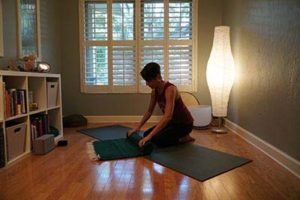
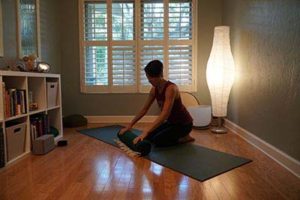
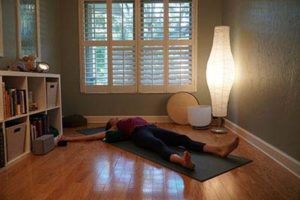
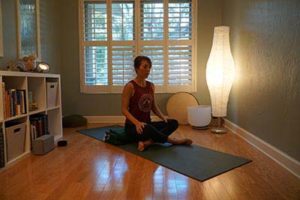
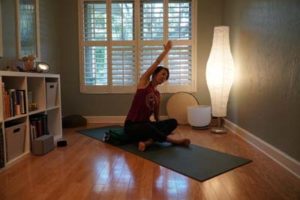
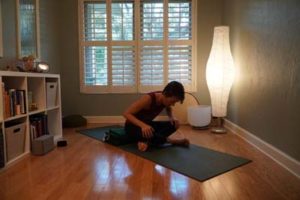
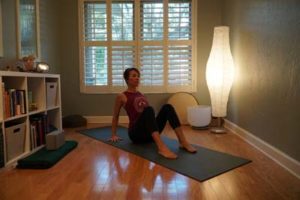
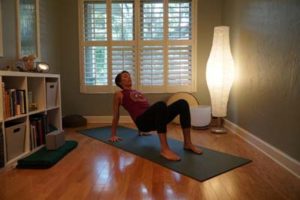
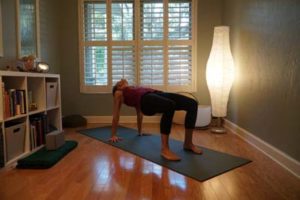
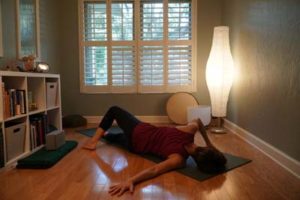
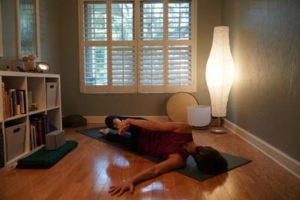
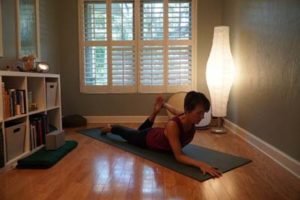
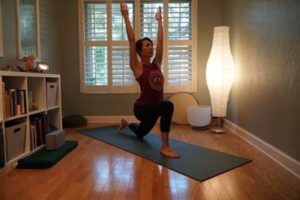
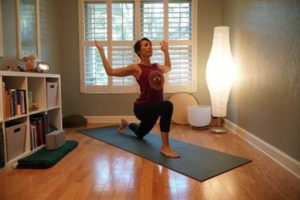
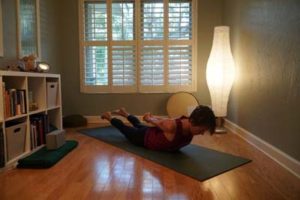
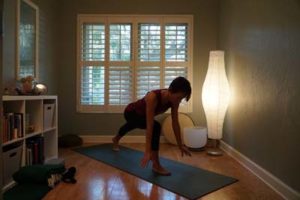
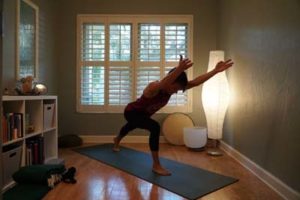
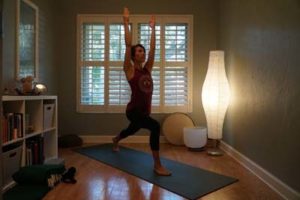
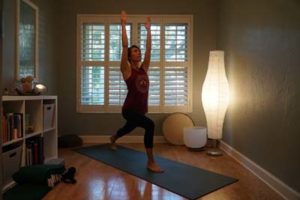
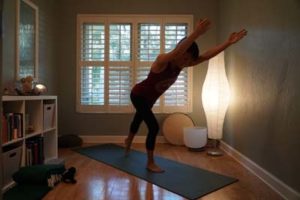
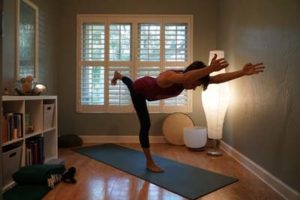
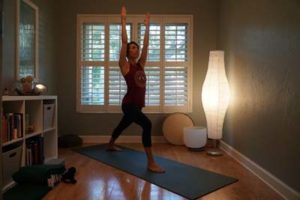
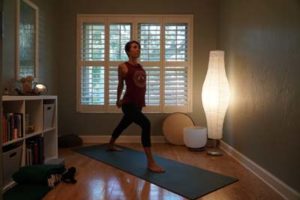
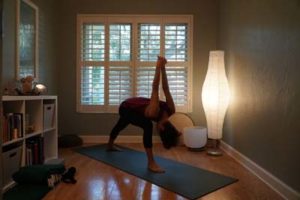
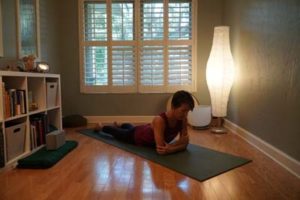
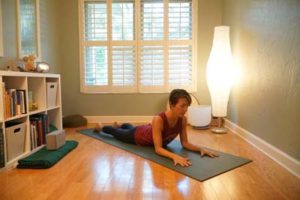
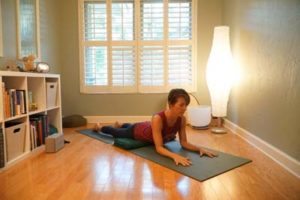
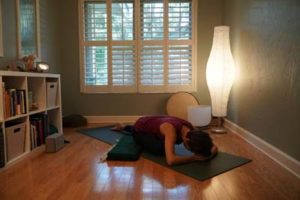
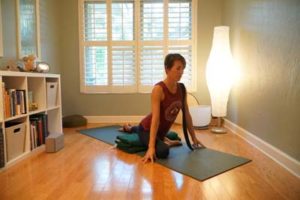
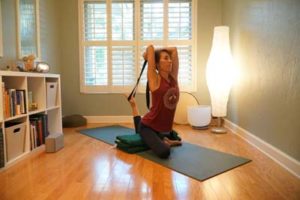
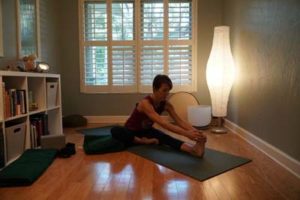
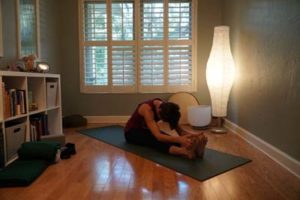
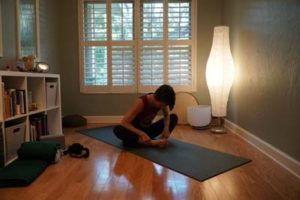
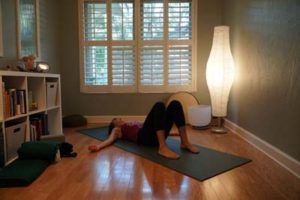
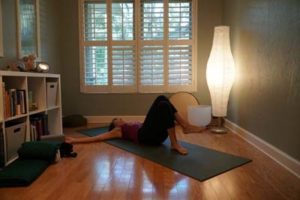
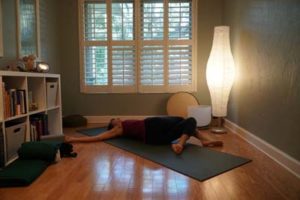

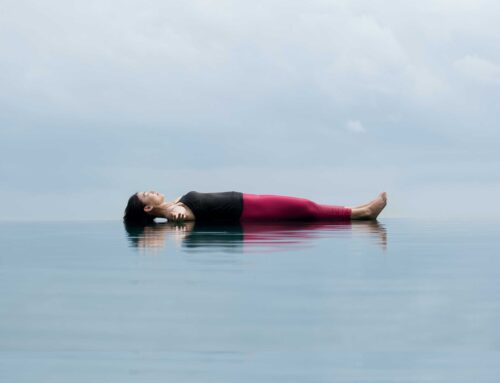

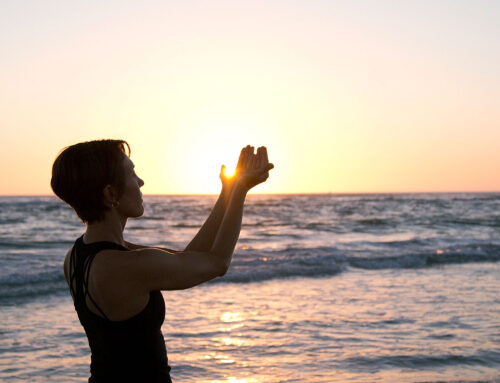
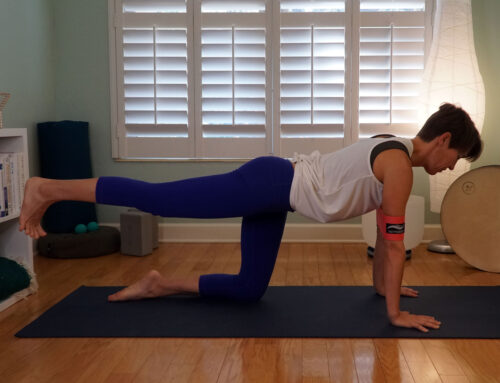
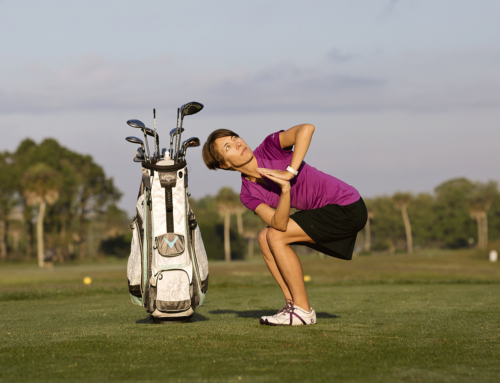
Leave A Comment